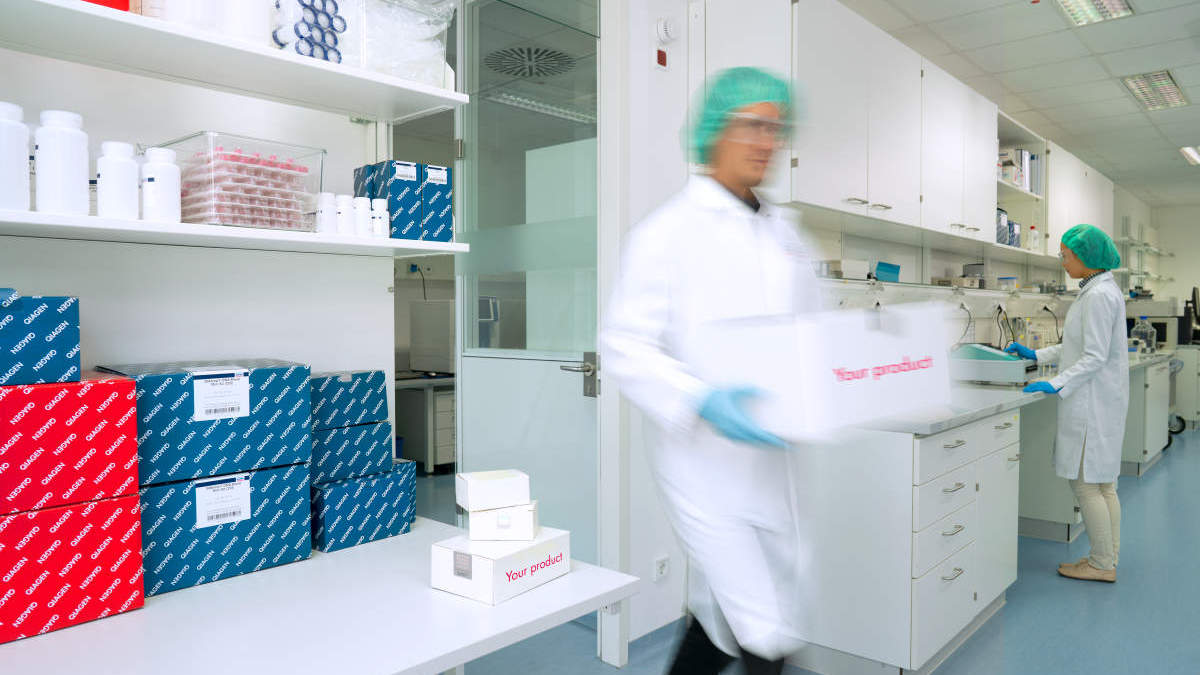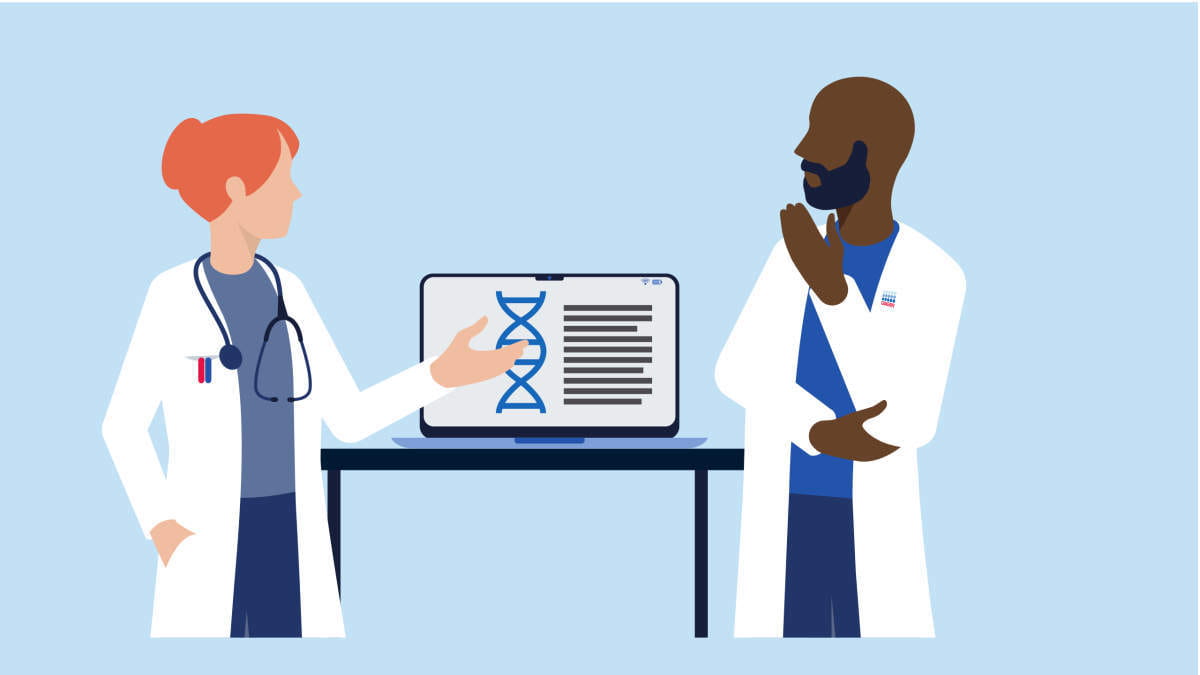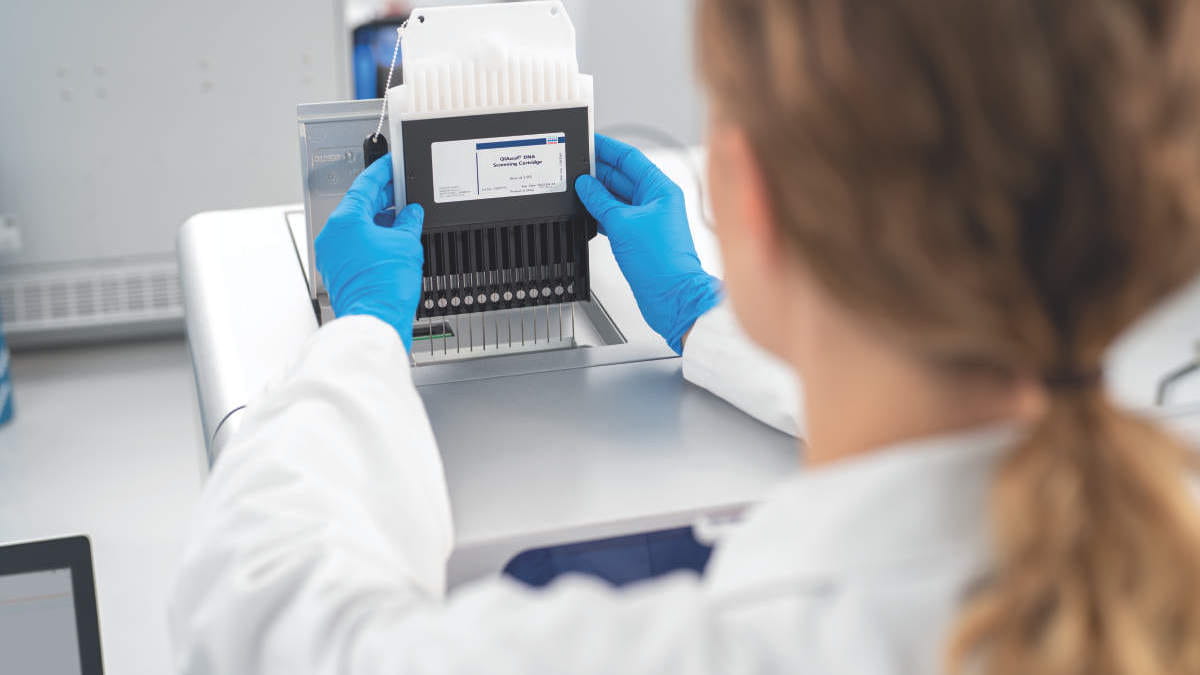Upcoming Events & Webinars
Join our events and webinars to meet experts, build collaborations and be the first to see new product releases.
Upcoming Webinars
-
 2024-05-08T03:00:00ZHow to choose the right partner for bulk and custom manufacturing with QIAGEN Strategic Partnerships
2024-05-08T03:00:00ZHow to choose the right partner for bulk and custom manufacturing with QIAGEN Strategic PartnershipsDeveloping a new product is exhilarating. But whether it’s enzyme, oligo, buffer, instrument or application, the path to innovation can be fraught with obstacles. And whether it be customization, R&D, compliance, regulation, kitting or supply chain security the right partner can help to smooth the bumps and straighten the curves.
This webinar examines the challenges assay manufacturers face when searching for a partner for bulk biotech supply. We’ll review key factors for success – development capabilities, customization, confidentiality, quality, scaling and consistency, as well as give an overview of our expansive enzyme portfolio. In this webinar, learn how you can ensure your criteria for formulation, quantities, compliance and timelines are met – an entire strategic plan from discovery to delivery.
The QIAGEN Strategic Partnerships program brings over 40 years of scientific, operational, customization and OEM expertise to the table, allowing businesses of any size to accelerate their innovation.Anna Sobczak, Global Product Manager Gdansk and 1 more -
 2024-05-08T09:00:00ZHow to choose the right partner for bulk and custom manufacturing with QIAGEN Strategic Partnerships
2024-05-08T09:00:00ZHow to choose the right partner for bulk and custom manufacturing with QIAGEN Strategic PartnershipsDeveloping a new product is exhilarating. But whether it’s enzyme, oligo, buffer, instrument or application, the path to innovation can be fraught with obstacles. And whether it be customization, R&D, compliance, regulation, kitting or supply chain security the right partner can help to smooth the bumps and straighten the curves.
This webinar examines the challenges assay manufacturers face when searching for a partner for bulk biotech supply. We’ll review key factors for success – development capabilities, customization, confidentiality, quality, scaling and consistency, as well as give an overview of our expansive enzyme portfolio. In this webinar, learn how you can ensure your criteria for formulation, quantities, compliance and timelines are met – an entire strategic plan from discovery to delivery.
The QIAGEN Strategic Partnerships program brings over 40 years of scientific, operational, customization and OEM expertise to the table, allowing businesses of any size to accelerate their innovation.Anna Sobczak, Global Product Manager Gdansk and 1 more -
 2024-05-08T15:00:00ZHow to choose the right partner for bulk and custom manufacturing with QIAGEN Strategic Partnerships
2024-05-08T15:00:00ZHow to choose the right partner for bulk and custom manufacturing with QIAGEN Strategic PartnershipsDeveloping a new product is exhilarating. But whether it’s enzyme, oligo, buffer, instrument or application, the path to innovation can be fraught with obstacles. And whether it be customization, R&D, compliance, regulation, kitting or supply chain security the right partner can help to smooth the bumps and straighten the curves.
This webinar examines the challenges assay manufacturers face when searching for a partner for bulk biotech supply. We’ll review key factors for success – development capabilities, customization, confidentiality, quality, scaling and consistency, as well as give an overview of our expansive enzyme portfolio. In this webinar, learn how you can ensure your criteria for formulation, quantities, compliance and timelines are met – an entire strategic plan from discovery to delivery.
The QIAGEN Strategic Partnerships program brings over 40 years of scientific, operational, customization and OEM expertise to the table, allowing businesses of any size to accelerate their innovation.Anna Sobczak, Global Product Manager Gdansk and 1 more -
 2024-05-08T18:00:00ZHow to choose the right partner for bulk and custom manufacturing with QIAGEN Strategic Partnerships
2024-05-08T18:00:00ZHow to choose the right partner for bulk and custom manufacturing with QIAGEN Strategic PartnershipsDeveloping a new product is exhilarating. But whether it’s enzyme, oligo, buffer, instrument or application, the path to innovation can be fraught with obstacles. And whether it be customization, R&D, compliance, regulation, kitting or supply chain security the right partner can help to smooth the bumps and straighten the curves.
This webinar examines the challenges assay manufacturers face when searching for a partner for bulk biotech supply. We’ll review key factors for success – development capabilities, customization, confidentiality, quality, scaling and consistency, as well as give an overview of our expansive enzyme portfolio. In this webinar, learn how you can ensure your criteria for formulation, quantities, compliance and timelines are met – an entire strategic plan from discovery to delivery.
The QIAGEN Strategic Partnerships program brings over 40 years of scientific, operational, customization and OEM expertise to the table, allowing businesses of any size to accelerate their innovation.Anna Sobczak, Global Product Manager Gdansk and 1 more
-
 2024-05-16T17:30:00Z
2024-05-16T17:30:00ZYou’re invited to attend the 2024 Clinician’s Roundtable, a virtual event where medical directors and oncologists will discuss how to better interpret genomic test results to tailor treatment strategies for cancer patients. As the role of the Molecular Tumor Board (MTB) becomes increasingly important in the implementation of evidence-based precision cancer medicine programs, molecular pathology labs must overcome challenges in genomic test interpretation to ensure maximum clinical utility of molecular profiling results. At this event, hear from clinicians at leading universities and organizations as they present real-world case studies of how molecular pathology labs can improve test turnaround, standardize test interpretation, and deliver comprehensive genomic reports with personalized diagnostic, prognostic, and therapeutic information for each patient.
The free-to-attend virtual event will consist of four educational parts:
- Case Presentations: Clinicians from Dana Farber Cancer Institute and the National Cancer Institute will present cases of how their labs have overcome challenges in genomic test interpretation.
- Live Q&A Session: Attendees will have the opportunity to ask the clinicians questions about their experiences implementing precision oncology programs at their institutions.
- Solution Showcase: In a brief presentation, experts from QIAGEN Digital Insights will showcase our leading Sample to Insight solutions for molecular tumor profiling.
- Future Forecast: The event will conclude with a short presentation about how molecular tumor profiling will change in the next five years and how labs can leverage new technologies to improve patient care.
David A. Barbie, MD, Director, Lowe Center for Thoracic Oncology and 1 more
-
 2024-05-21T15:00:00Z
2024-05-21T15:00:00ZIn the dynamic landscape of next-generation sequencing (NGS), quality control (QC) is critical in ensuring the reliability and accuracy of genomic data provided to researchers seeking core lab support. With the exponential growth of genomic research and the choice of different electrophoresis instruments for sample and library QC, how can core labs ensure they have the most robust method in place? Current gel electrophoresis methods are limiting in terms of convenience, cost and analytical insight. This warrants an advanced solution to improve NGS quality control standards while saving resources and increasing data quality.
Join us for this insightful webinar as we review:
- Challenges and limitations of size and contamination analysis in NGS workflow QC
- How to incorporate advanced capillary electrophoresis into NGS workflows
- Benefits for the core
A live Q&A will follow the webinar.
Marion Egli, Senior Global Product Manager, Automated Systems and 2 more
-
 2024-05-23T13:00:00Z
2024-05-23T13:00:00ZDiving into plant DNA extraction is like navigating a dense jungle, filled with unexpected challenges. The incredible diversity of plants brings about unique obstacles, such as the presence of polysaccharides and polyphenols, the need to break through tough cell walls, and interference from a variety of secondary metabolites. These obstacles can impede downstream application analysis, highlighting the need for optimal DNA extraction protocols that can produce consistently high yields across different species.
In this webinar, we’ll provide you with tips and tricks for handling different types of plant samples, specifically:
- Proper sample collection and disruption
- Optimized extraction techniques for maximum yield and successful downstream analysis
- Automating sample preparation for consistent extraction and purification results
Let our scientists help you navigate through the complexity of plant DNA extractions.
Dominic ONeil, M.S., M.B.A., Director, Microbiome Product Development and 1 more
-
 2024-05-28T05:00:00Z
2024-05-28T05:00:00ZDiving into plant DNA extraction is like navigating a dense jungle, filled with unexpected challenges. The incredible diversity of plants brings about unique obstacles, such as the presence of polysaccharides and polyphenols, the need to break through tough cell walls, and interference from a variety of secondary metabolites. These obstacles can impede downstream application analysis, highlighting the need for optimal DNA extraction protocols that can produce consistently high yields across different species.
In this webinar, we’ll provide you with tips and tricks for handling different types of plant samples, specifically:
- Proper sample collection and disruption
- Optimized extraction techniques for maximum yield and successful downstream analysis
- Automating sample preparation for consistent extraction and purification results
Let our scientists help you navigate through the complexity of plant DNA extractions.
Dominic ONeil, M.S., M.B.A., Director, Microbiome Product Development and 1 more -
 2024-05-28T16:00:00Z
2024-05-28T16:00:00ZDiving into plant DNA extraction is like navigating a dense jungle, filled with unexpected challenges. The incredible diversity of plants brings about unique obstacles, such as the presence of polysaccharides and polyphenols, the need to break through tough cell walls, and interference from a variety of secondary metabolites. These obstacles can impede downstream application analysis, highlighting the need for optimal DNA extraction protocols that can produce consistently high yields across different species.
In this webinar, we’ll provide you with tips and tricks for handling different types of plant samples, specifically:
- Proper sample collection and disruption
- Optimized extraction techniques for maximum yield and successful downstream analysis
- Automating sample preparation for consistent extraction and purification results
Let our scientists help you navigate through the complexity of plant DNA extractions.
Dominic ONeil, M.S., M.B.A., Director, Microbiome Product Development and 1 more

